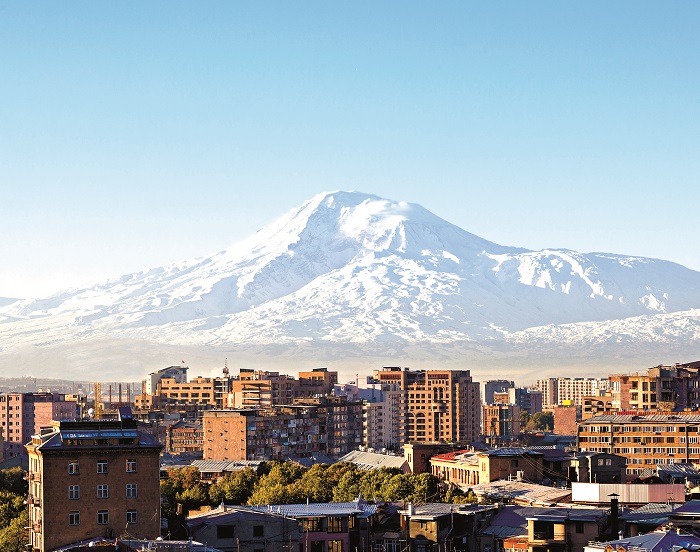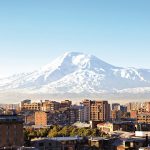For two weeks in May I had the marvellous privilege of exploring a fascinating and beautiful country, rich in history and struggle, a place almost undiscovered by tourists: Armenia. When I told people I was off to Armenia on a self-funded trip most people looked puzzled and said, “Where exactly is Armenia?”
Armenia is in the South Caucasus region, sharing borders with Turkey, Russia, Georgia, Azerbaijan and Iran. The capitol is Yerevan, a city of over a million people, with the awesome snow peaked mountains of Mt Ararat dominating the skyline. The mountain forms an impressive background to Armenia’s ancient past.
Genesis 8 tells us that Noah and his ark came to rest on the mountains of Ararat. While people are still searching for the ark, Armenia remains a country of remarkable resilience and grace. The tour group that I was part of was organised by Rev Dr Krikor Youmshajekian, a Uniting Church minister from Sydney who is Armenian. He was the perfect guide, having a deep and rich connection with this land and its religious history.
The Uniting Church connection seemed at first a bit remote. Most Armenian Christians are members of the Armenian Apostolic Church; a church they believe has true apostolic foundations. They claim that the apostles Bartholomew and Thaddeus came to Armenia in the first century and preached the gospel. A small, but persecuted church began to flower.
Various Armenian kings, however, opposed the new religion until a remarkable event took place in AD301. King Trdat had imprisoned a Christian leader, Gregor the Illuminator, for twelve years in a snake infected pit. On releasing him and seeing the Christlike radiance of Gregor and receiving a healing touch from this saint, the king converted and declared Armenia a Christian nation – several years before Constantine declared the Roman Empire Christian.
The Armenians eventually diverged from Eastern Orthodoxy in AD451 preferring to share fellowship with the Coptic and Ethiopian church, insisting that the two natures of Christ – divine and human – were found in one body (Monophysite). Despite centuries of religious persecution from the Persians, the Turks and more recently the Russians, this ancient faith has persisted.
The Uniting Church in Australia stood with all Armenians in 2015 as the Armenia genocide of 1915-1921 was remembered. Visiting the Genocide memorial in Yerevan is very moving. About one and a half million Armenian men, women and children were murdered. Following this monumental tragedy the atheist Russians took over their land believing, as Marx did, that all religion would wither away in the milieu of the liberation of the proletariat. Just to make sure, the Soviets closed almost all the churches and banned free and open practice of the Christian faith.
When the Soviets left in 1991, one might have expected the church not to have survived. Remarkably, there was a Christian revival in the 1990s. Today over 90% of Armenians are Christian.
It was such a joy to visit seventh and eighth century monasteries, drink in the beauty of the mountains and hills, enjoy the simple Armenian hospitality and be inspired by a people whose faith in God had never wavered despite the most appalling suffering and loss.
Put Armenia on your bucket list.
Steve Francis



